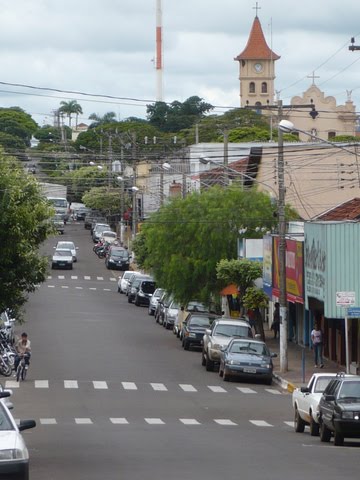O ESO (Observatório Europeu do Sul, na sigla em inglês) divulgou nesta quarta-feira a imagem de uma galáxia que se assemelha muito a nossa pelo seus "braços" espirais.
A chamada NGC 6744 tem, porém, um diferencial no tamanho: possui praticamente o dobro do diâmetro de cem mil anos-luz da Via Láctea. Outra característica é o seu brilho, comparável a 60 bilhões de vezes ao do Sol.
A NGC 6744, localizada a cerca de 30 milhões de anos-luz da Terra --é uma das maiores e mais próximas galáxias espirais--, situa-se ao sul da constelação de Pavão, no hemisfério sul.
Na foto tirada pelo telescópio MPG, a partir do deserto de Atacama, no Chile, os pontos em vermelho representam regiões onde há estrelas em formação.
Velocidade da LUZ
1- 299792,458 km por segundo
2- Um ano (365 dias) luz equivale a:- 9.460.526.207.068.016 (9,5 trilhões) 9460536207068,016 km por segundo
3- Sol > Terra > 149.597.870 quilômetros, e a luz percorre essa distancia no tempo de 8,3 minutos.
O ano-luz e as distâncias cósmicas
Para calcular quanto mede 1 ano-luz em quilômetros, você precisa saber que a velocidade da luz no vácuo é de 299792,458 quilômetros por segundo (km/s) e que o ano da definição é o do nosso calendário, chamado de Ano Gregoriano Médio, que é de 365,2425 dias. Então, se a cada segundo de tempo a luz percorre 299792,458 km, ela vai andar 60 vezes mais em 1 minuto, o que dá 17987547,48 km. Anda-se isso em 1 minuto, vai andar 60 vezes mais em 1 hora, o que dá 1079252848,8 km. Se anda isso em 1 hora, vai andar 24 vezes mais em 1 dia, o que dá 25902068371,2 km. Finalmente, se anda isso em 1 dia, vai andar 365,2425 vezes mais em 1 ano, o que dá 9460536207068,016 km.
Telescope photographed spiral galaxy like the Milky Way
Galaxy andromedra
ESO (European Southern Observatory, its acronym in English) announced Wednesday the image of a galaxy that is very similar to ours by their "arms" spirals.
The so-called NGC 6744 has, however, a difference in size: it has almost twice the diameter of a hundred thousand light years from the Milky Way. Another feature is its brightness comparable to 60 billion times the Sun
NGC 6744, located about 30 million light-years from Earth - is one of the largest and nearest spiral galaxies - is located south of the constellation of Peacock in the southern hemisphere.
In the picture taken by the telescope MPG, from the Atacama Desert in Chile, the points in red represent regions where star formation.
Speed of Light
1 to 299,792.458 miles per second
2 - One year (365 days) light is equivalent to: - 9.460.526.207.068.016 (9.5 trillion) 9460536207068.016 kilometers per second
3 - Sol> Earth> 149,597,870 km, and the distance that light travels in time of 8.3 minutes.
The light-year and the cosmic distances
To calculate how much measures 1 light year in kilometers, you need to know that the speed of light in vacuum is 299,792.458 kilometers per second (km / s) and that the definition is the year of our calendar, called the Gregorian Year East, which is 365.2425 days. So if every second of time the light travels 299,792.458 kilometers, she will walk 60 times in 1 minute, giving 17,987,547.48 km. Come to this in 1 minute, will walk 60 times in one hour, giving 1,079,252,848.8 km. If it goes in one hour, will walk 24 times in one day, which gives 25902068371.2 km. Finally, if it goes in one day, will walk 365.2425 times in one year, which gives 9460536207068.016 km.
galaxy to the bottom








































Nenhum comentário:
Postar um comentário